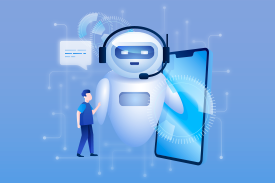Computers cannot think. But increasingly, they can do things only humans were able to do. It is now possible to automate tasks that require human perceptual skills, such as recognizing handwriting or identifying faces, and those that require cognitive skills, such as planning, reasoning from partial or uncertain information, and learning.
“Technologies able to perform tasks such as these, traditionally assumed to require human intelligence, are known as cognitive technologies.”
Cognitive technologies have been evolving over decades. Businesses are taking a new look at them because some have improved dramatically in recent years, with impressive gains in computer vision, natural language processing, speech recognition, and robotics, among other areas.
Because cognitive technologies extend the power of information technology to tasks traditionally performed by humans, they have the potential to enable organizations to break prevailing tradeoffs between speed, cost, and quality.
We found that applications of cognitive technologies fall into three main categories: product, process, or insight.
• Product applications embed the technology in a product or service to provide end-customer benefits.
• Process applications embed the technology in an organization’s workflow to automate or improve operations.
• Insight applications use cognitive technologies—specifically advanced analytical capabilities such as machine learning—to uncover insights that can inform operational and strategic decisions across an organization.
Each of the type is further discussed below.
Product
Organizations can now embed cognitive technologies to increase the value of their products or services by making them more effective, convenient, safer, faster, distinctive, or otherwise more valuable.
Not only can cognitive technologies be used to enhance products and services, they can also bring about entirely new classes of products and services that can create new markets and generate large gains for inventors.
Process: Automating internal processes with cognitive technologies
Another category of cognitive technology application is automation. By automation we mean using computer systems to do work that people used to do. The result is that the work gets done faster, cheaper, better, or some combination of the three.
Some applications of cognitive technologies eliminate jobs by taking on all of a worker’s responsibilities. Automated voice response systems that replace human customer service agents for first-tier customer support are well established.
Cognitive technologies are not the solution to every problem. Organizations need to evaluate the business case for investing in this technology in an individualized way. Organizations should look across their business processes, their products, and their markets to examine where the use of cognitive technologies may be viable, where it could be valuable, and where it may even be vital.
Insight: Cognitive technologies learning from information
The third category of cognitive technology application is creating insight. Natural language processing techniques, for instance, make it possible to analyze large volumes of unstructured textual information that has not yielded to other techniques. Machine learning can draw conclusions from large, complex data sets and help make high-quality predictions from operational data. Many companies are using cognitive technologies to generate insights that can help reduce costs, improve efficiency, increase revenues, improve effectiveness, or enhance customer service.








